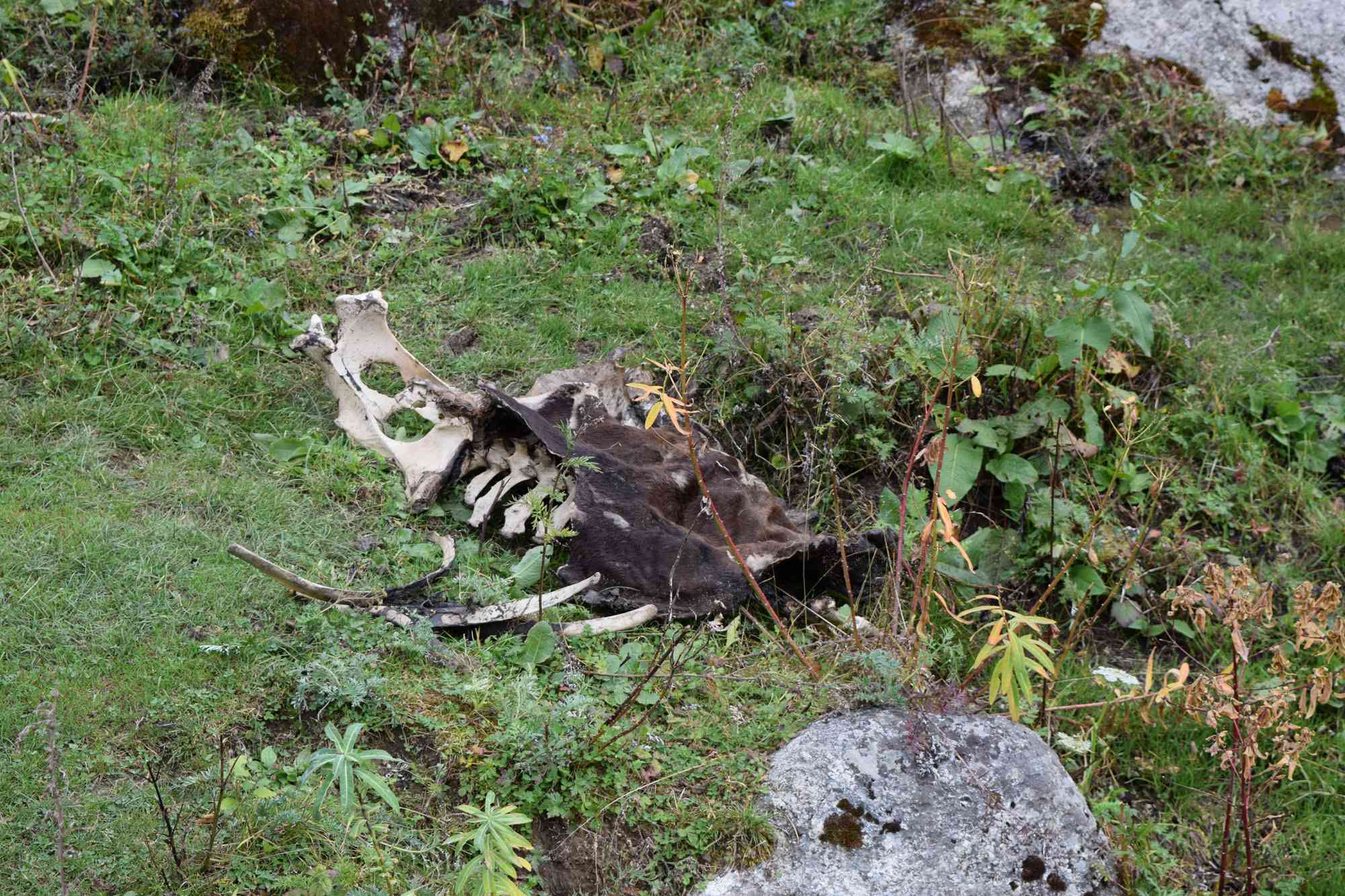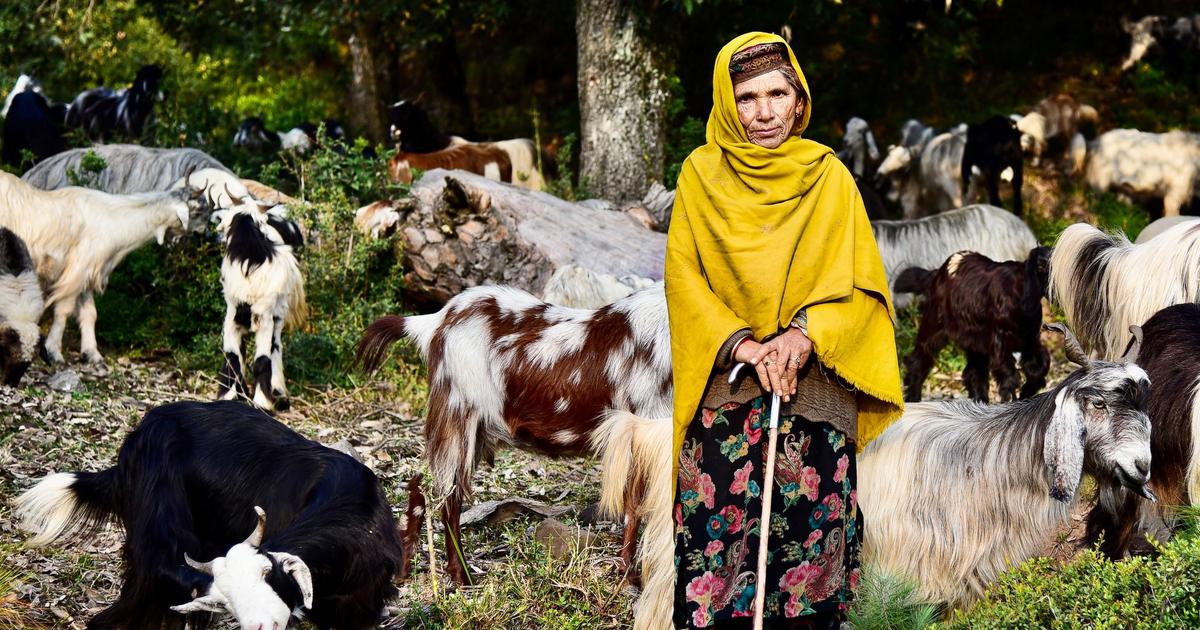In the forests and valleys of Kashmir, a quiet struggle plays out daily between local communities and two of the region’s most elusive predators – the Asiatic black bear and the leopard. In recent years, incidences of these carnivores attacking livestock for prey has become a growing concern. This poses a dual threat: it undermines rural livelihoods and jeopardises the long-term survival of these wild animals.
A new study examined livestock predation in three protected areas of southern Kashmir, to assess the economic toll of these losses and map the spatial patterns of such attacks.
“Much of the focus so far has been on human injuries and fatalities,” says co-author Bilal A. Bhat, senior assistant professor at the Department of Zoology, University of Kashmir. “However, for a more comprehensive understanding of human-wildlife interactions, it’s essential to also gather data on livestock predation and crop damage. This broader approach is critical for developing effective management strategies that balance human needs with wildlife conservation.”
Carnivore hotspots
The study by University of Kashmir researchers focused on Overa-Aru Wildlife Sanctuary, Achabal Conservation Reserve, and Rajparian Wildlife Sanctuary. These sites were selected for their varied human-wildlife interactions, land-use patterns, and socio-economic dynamics.
All three protected areas are surrounded by villages where farming and livestock rearing are a main source of livelihood. Overa-Aru, the largest, spans 425 square kilometres and is bordered by eight villages. Achabal has nine villages in its buffer zone, while Rajparian is more isolated, adjacent to just one village.

From January 2021 to December 2022, researchers surveyed 50 households across these three protected areas – 29 in Overa-Aru, 19 in Achabal, and two in Rajparian. Each had experienced at least one case of livestock loss during that time.
Data was collected using a snowball sampling method, starting with reports from village heads and then verified through other residents. Where possible, researchers visited the sites to confirm attacks. Monthly check-ins with village heads were carried out over the two-year period to track new incidents. Affected livestock owners were interviewed to gather information about the attack, including details of the animals, timing, location, and predator species. GPS coordinates were recorded on-site using a handheld device or, where needed, estimated using Google Earth.
In total, 92 animals were lost – 59 in Overa-Aru, 30 in Achabal, and three in Rajparian. Most of those killed were sheep, followed by cattle, horses, and goats. Leopards were responsible for a majority of the kills.
“Sheep are often targeted due to their ideal size, lack of defensive behaviour, ease of capture, and wide availability,” explains Bhat. “We also observed surplus killing – where several animals are killed in a single attack – mainly by leopards, a pattern noted in other studies as well.”
On the prowl
The researchers also found that the two predators exhibited distinct hunting patterns. While bears also targeted cattle, leopards preferred horses. Most attacks occurred during the summer months, especially in June and July. Both predators struck mostly during daytime, aligning with livestock grazing routines. This goes against conventional wisdom, which suggests leopards usually hunt at night.
The attack locations also varied. Bears typically stayed within forested areas, avoiding human settlements. Leopards, however, were bolder – some attacks took place inside livestock pens or near homes.
As for the livestock themselves, no specific age group was consistently targeted. However, animals between four and six years old were slightly more vulnerable – possibly due to increased mobility or tendency to stray from the herd.

Counting the cost
The financial burden of these losses was substantial. In Overa-Aru, loss because of livestock predation amounted to nearly Rs 13 lakh over two years – more than Rs 22,000 per affected household annually. In Achabal, losses reached Rs 8.78 lakh, with households averaging just over Rs 23,000. Rajparian had fewer total losses, but the per-household cost was higher (around Rs 40,000) due to the small number of respondents.
These amounts are significant for families who depend on agriculture and livestock. In most cases, no compensation was provided, fuelling frustration and increasing the risk of retaliatory killings.
Despite the hardships, many respondents expressed a generally positive attitude toward wildlife, acknowledging its ecological value. “Negative sentiment arises from the severe economic toll – especially among lower socioeconomic groups who rely on livestock for sustenance,” says Bhat. “This frustration increases the likelihood of retaliatory killings, posing a significant challenge to conservation.”
Addressing the critical role that the sample size plays in a perception study, Aniruddha Majumder, scientist and divisional in-charge, animal ecology division, State Forest Research Institute – Jabalpur, shares, “In this case, the very small sample size requires a clear and detailed justification, such as constraints like limited accessibility or logistical challenges. Additionally, perception studies involving human-carnivore interactions need to represent different age, sex, and other demographic groups to assess costs more accurately.” Majumder is not associated with this study.
The way forward
The study also reveals a deeper truth: protecting wildlife isn’t only about conserving forests, it’s also about supporting the people who live alongside them. Understanding where and when attacks happen can help authorities design smarter, more targeted responses.
The authors note that restoring habitats and prey populations within protected areas are crucial to easing conflict. Involving local communities in habitat restoration, alongside clear demarcation of grazing zones, can help rebuild natural prey bases. Additionally, a timely and efficient compensation scheme could ease economic stress while supporting conservation goals. Likewise, funding for stronger corrals and improved livestock guarding, especially during high-risk summer months when herds move to higher altitudes, can reduce predation.
“Without timely intervention, both rural livelihoods and the future of large carnivores hang in the balance. Authorities, in collaboration with local communities, academic institutions, and NGOs, must adopt a comprehensive conflict management strategy, one that safeguards people and wildlife alike,” says Bhat.
This article was first published on Mongabay.










